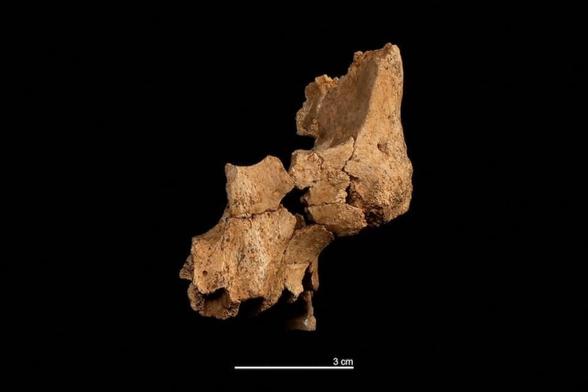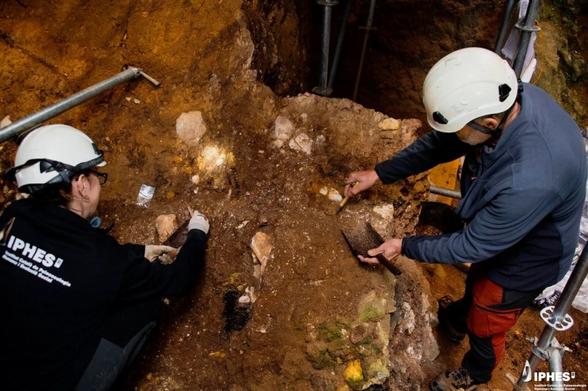Unearthing “Pink”: A Transformative Discovery in Human Evolution – The Oldest Face of Western Europe
So I missed reporting on this news recently; and it’s pretty significant so I wanted to make sure that I addressed it. I also plan on making a quick summary video about it for sharing and educational enjoyment ASAP. Please learn, like, share, and subscribe!
In the depths of northern Spain’s Sierra de Atapuerca, an extraordinary discovery has recently captured global attention. Fossilized fragments of a human face, affectionately nicknamed “Pink,” have been unearthed in the Sima del Elefante cave. Radiometric dating places these remains between 1.1 and 1.4 million years old, marking them as the oldest known human facial fossils in Western Europe, significantly predating earlier discoveries.
Anatomical and Evolutionary Significance
The fossil, cataloged as ATE7-1, is remarkably well-preserved, comprising approximately 80% of the left side of an adult individual’s mid-face. The fragment includes key anatomical features such as the cheekbone and upper jaw. Although Pink shares certain characteristics with Homo erectus—particularly robust facial structures—it displays distinct differences unseen in other known hominin fossils. This intriguing mix of familiar and unique traits has prompted scientists to tentatively classify Pink as Homo affinis erectus, suggesting it might represent a previously unknown hominin species or subspecies closely related to, yet distinct from, the classic Homo erectus.
The implications of this discovery are profound, hinting at a previously unrecognized branch in the human evolutionary tree. Detailed comparative analyses of cranial morphology between Pink and other early human species are currently underway. These studies aim to clarify Pink’s precise phylogenetic position and enrich our understanding of early human diversity in Europe.
Cultural and Environmental Context
Alongside Pink, archaeologists uncovered a collection of stone tools crafted from quartz and flint. These artifacts, together with animal bones bearing unmistakable cut marks, provide compelling evidence of advanced tool use and meat processing. Such findings demonstrate a level of behavioral sophistication and cognitive capability previously unattributed to European hominins from this period.
The environmental context of Pink’s era further enhances our comprehension of these early inhabitants. The Atapuerca region during this period was characterized by a lush Mediterranean forest ecosystem, abundant with fauna and plentiful water sources. Such a hospitable environment would have supported prolonged habitation, enabling early hominins to flourish and evolve.
Challenging Existing Migration Models
Pink’s discovery significantly reshapes our understanding of early human migration into Europe. Before this find, the oldest human fossils in Europe dated back approximately 800,000 years, suggesting a later arrival and establishment. Pink pushes this timeline back by several hundred thousand years, indicating that hominins entered and adapted to Western European environments much earlier than previously thought.
This discovery compels paleoanthropologists to reassess current migration models, examining the timing, routes, and adaptive strategies employed by early hominins as they dispersed across the continent. Additionally, the possibility of a new species raises intriguing questions regarding interactions, competition, and potential interbreeding among different hominin populations across Eurasia.
Future Research Directions
Despite the groundbreaking nature of Pink’s discovery, the fossil raises as many questions as it answers. Ongoing and future excavations at the Atapuerca site are critical for gaining deeper insights into this mysterious early human lineage. Continued interdisciplinary research—including detailed morphological analyses, genetic studies (where viable), and advanced dating techniques—will be essential to fully understand the significance of Pink’s discovery.
Researchers also aim to investigate broader regional contexts, determining the geographical distribution of these hominins and their interactions with contemporaneous populations elsewhere in Eurasia. Each subsequent find will further illuminate the complexity and interconnectedness of early human evolution, enriching the intricate narrative of our shared past.
Conclusion
The discovery of Pink in the Atapuerca Mountains is more than an addition to the fossil record—it represents a transformative moment in our understanding of human evolution in Europe. By revising the timeline of early human settlement and introducing the possibility of an entirely new hominin lineage, Pink challenges us to reconsider our evolutionary history, highlighting the ongoing mysteries of our ancient past.
References
- Washington Post: “Fragments of a face more than a million years old found in Spanish cave”
- CENIEH: “Atapuerca reescribe la historia del primer poblamiento europeo”
- The Times: “Oldest human facial bones found in western Europe rewrite prehistory”
#AncientHumans #AncientMigration #ArchaeologicalDiscoveries #AtapuercaDiscovery #EarlyHominins #EvolutionaryAnthropology #FossilFinds #HomininFossils #HumanEvolution #HumanOriginsResearch #Paleoanthropology #PrehistoricEurope #ScienceCommunication #SimaDelElefante

